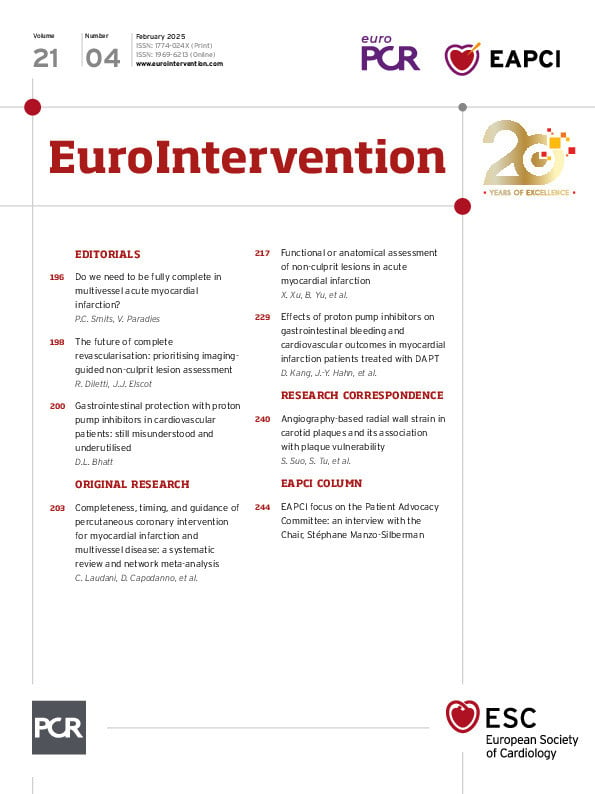In 2012, the European Society of Cardiology (ESC) Guidelines for the management of acute ST-segment elevation myocardial infarction (STEMI) stated that primary percutaneous coronary intervention (PCI) should be limited to the culprit vessel with the exception of cardiogenic shock (Class IIa, Level of Evidence B recommendation) and, in case of multivessel disease with non-culprit lesions suitable for revascularisation stress testing, or imaging for ischaemia or viability is indicated (Class I, Level of Evidence A recommendation).
In the past 10 years, these recommendations have shifted almost in the opposite direction. It started with the PRAMI study, the first randomised controlled trial (RCT) that challenged the concept that primary PCI should be limited to the culprit vessel only and disregarded the need for additional ischaemia testing for non-culprit lesions1. PRAMI randomised patients between culprit-only treatment and angiography-guided complete revascularisation by PCI (preventive PCI) and showed that a preventive PCI strategy significantly reduced the composite endpoint of cardiac death, recurrent non-fatal myocardial infarction and refractory angina. Even without the “soft” endpoint of refractory angina, the study was positive for the composite of the...
Sign up for free!
Join us for free and access thousands of articles from EuroIntervention, as well as presentations, videos, cases from PCRonline.com

